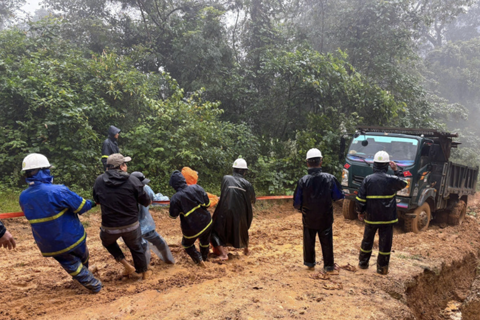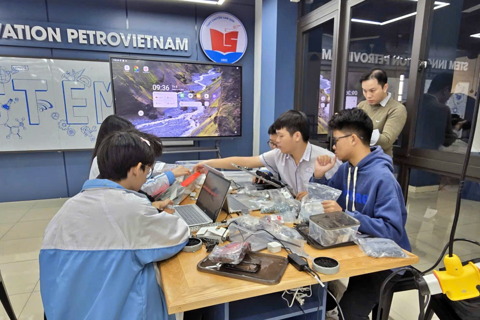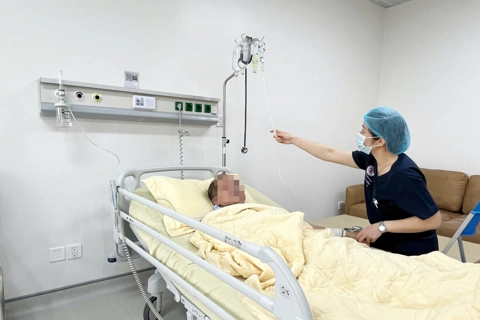Experts urge demand control to reduce private cars in Hanoi
Transport demand management strategies are expected to help Hanoi effectively reduce private vehicle usage amid increasing traffic flow in the city of eight million population.
THE HANOI TIMES — Local experts have believed that transportation demand management (TDM) is one of the most important solutions to reduce traffic congestion, which is crucial in curbing the use of private vehicles in large cities like Hanoi.Experts Urge Demand Control to Reduce Cars in Hanoi
Master Tran Tuan Anh, an urban management specialist and lecturer of the University of Transport and Communications, said TDM is a set of strategies and policies designed to change people's travel habits to improve the efficiency of transport networks, reduce congestion, and promote sustainability.
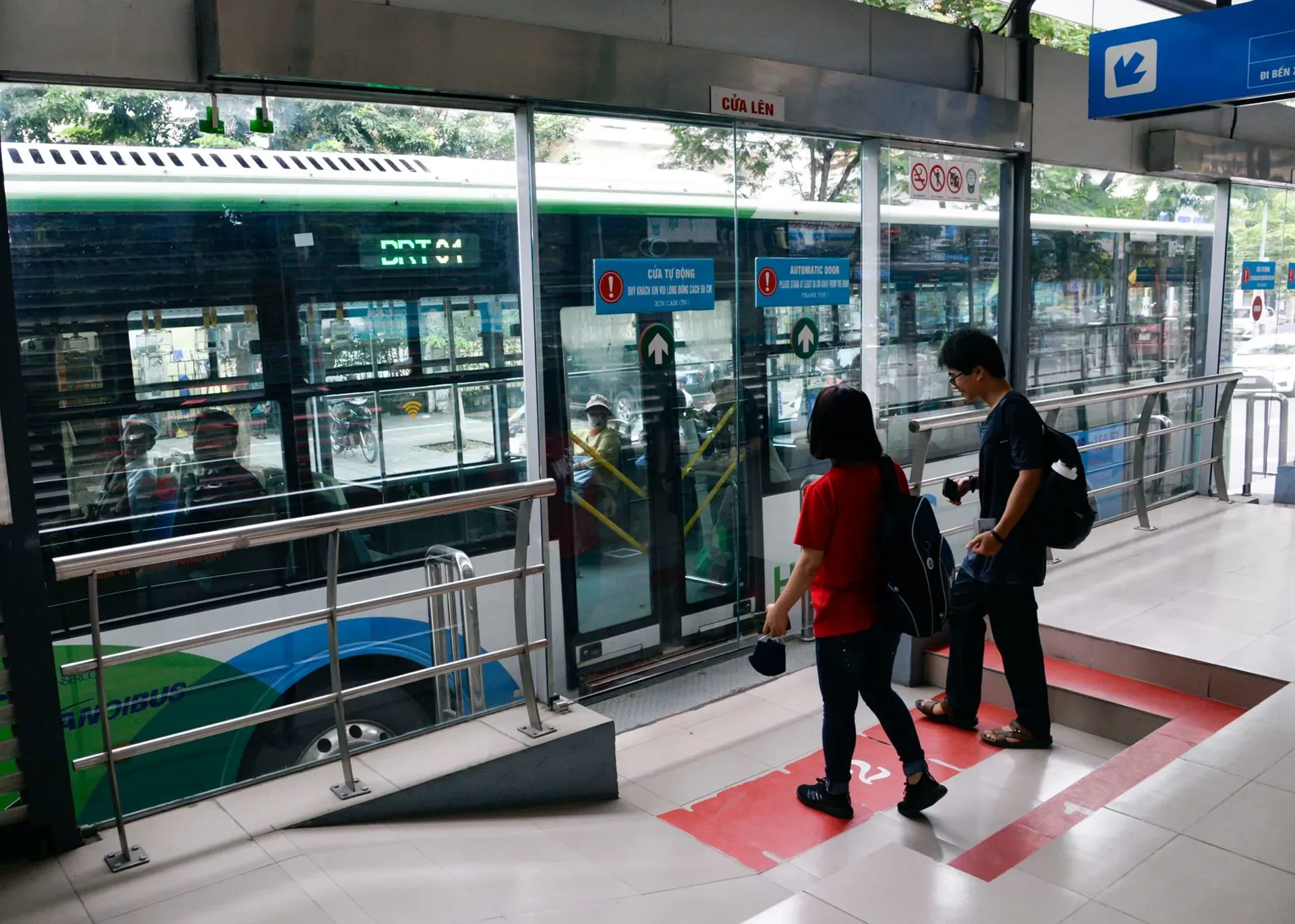
People boarding a BRT on Le Van Luong Street in Hanoi. Photos: Pham Hung/The Hanoi Times
"Hanoi needs specific measures to regulate and reduce the demand for private vehicle travel to ease traffic pressure. Instead of spending a lot of money on infrastructure, the city should apply TDM to reduce investment burden, traffic congestion, and environmental pollution,” Tuan Anh told The Hanoi Times.
Recently, the city has implemented many TDM solutions, such as increasing the frequency of buses, improving the public transport network and encouraging people to use it, adjusting working hours, and banning or restricting certain types of vehicles during rush hours.
"However, the above TDM solutions are temporary and short-term. They are not fundamental and long-term to effectively tackle traffic congestion in Hanoi," said Tuan Anh.

Master Tran Tuan Anh, an urban management specialist
According to the World Bank, there are four TDM measures, including: Improving public transit systems such as buses and metros, as well as bike-sharing schemes; Promoting alternative modes of transport, encouraging walking, cycling, car-sharing, and the use of public transport; Implementing strategies to optimize traffic flow, such as traffic signal coordination and dedicated bus lanes; and Imposing parking fees and vehicle restrictions in congested areas.
"By combining these TDM strategies, Hanoi can effectively reduce private vehicle use, resulting in improved traffic flow, less air pollution, and a more sustainable transportation system,” Tuan Anh stressed.
Drastic solutions to curb private vehicles
According to statistics from the Hanoi Department of Construction, there are currently around 9.2 million vehicles in the city, in addition to 1.2 million private cars and motorcycles from other cities and provinces. On average, road infrastructure typically grows at 0.3% per year, which is 11-17 times slower than the 4-5% growth in the vehicle fleet. In particular, the number of private vehicles is growing at about 10% per year, which is over 30 times faster than infrastructure growth.
"No infrastructure system can keep up with such severe overload of traffic density. Nearly 10 million vehicles a day put terrible pressure on Hanoi's roads, costing the city billions of US dollars every year. To reduce traffic congestion, one of the most drastic solutions is that Hanoi must be determined to curb the use of private vehicles," said Tuan Anh.
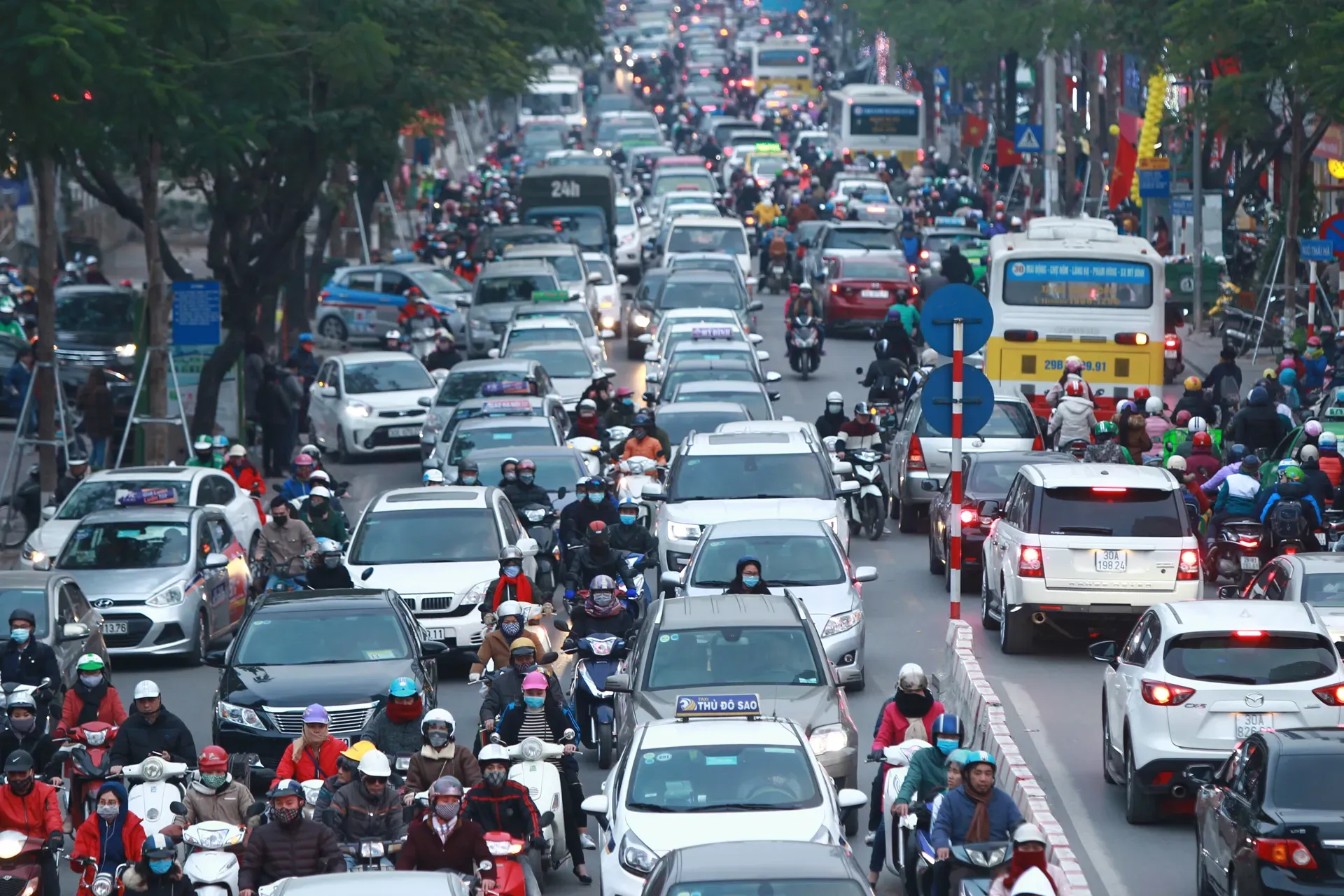
Traffic jam during rush hour on Thai Ha Street, Dong Da District, Hanoi.
Other experts also believed that Hanoi needs to focus on two urgent solutions: TDM and curbing private vehicles, including electric ones.
"Reducing the use of private cars is one solution, along with encouraging people to use other modes of transport," said Nguyen Cao Minh, Director of the Hanoi Metropolitan Railway Management Board (MBR).
He said the city must quickly expand the priority space for buses, while motivating people to reduce the use of private cars. The operation of Hanoi's first and second metro lines shows that when there are dedicated lanes for these modes of transport, people are willing to switch to them, helping Hanoi balance the capacity of the transport infrastructure system.
Hoang Thi Thu Phuong, an expert in economic management, believes that the increasing cost of using private cars will make people think twice about owning them.
Hanoi has been floating the idea of discouraging private cars for a long time, but is facing difficulties.
"If the parking fee is increased 5-10 times and congestion and environmental charges are introduced for vehicles entering and leaving downtown Hanoi, many people will switch to buses and metro lines," Phuong said, adding that the city government must encourage people to walk, take the bus, and use the urban railways. The movement should be initiated by officials.
She said Hanoi needs a clear and concrete roadmap to reduce the number of private vehicles, especially in the city center. Policies on taxes and fees can have an immediate impact and strongly influence people's transportation choices.
"Many countries have used administrative and economic measures to limit the use of private cars, with positive results. Hanoi has studied all these solutions for a long time, but has not been able to implement them. It is now high time to take action by setting up restricted areas for private vehicles," Phuong added.




